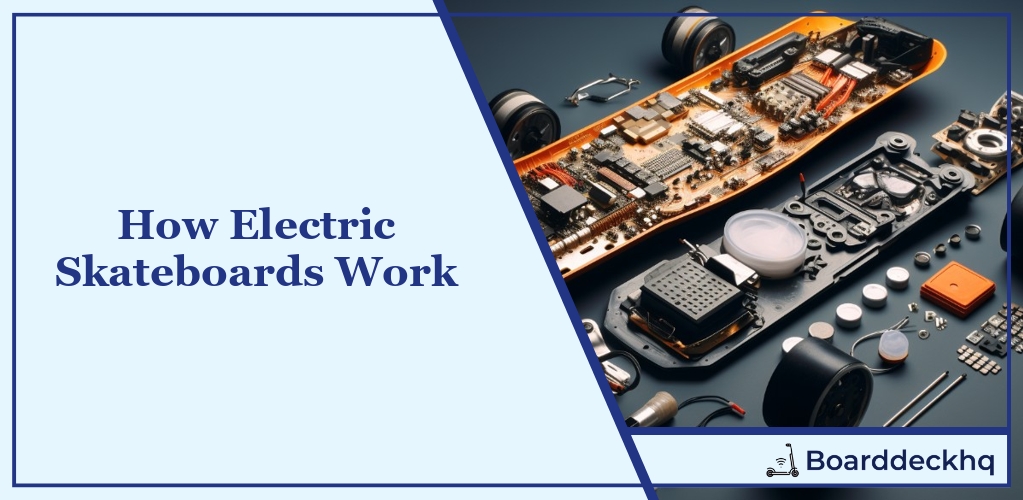Have you ever wondered how you zip through the city streets on an electric skateboard, carving corners effortlessly, without any pushing or footwork? How does this fascinating piece of technology transform your commute into an adventure? In essence, it’s a fusion of cutting-edge technology and traditional skateboard design, turning an otherwise physically demanding activity into a breeze. Intrigued?
What we’ll cover:
- Grasping E-Skateboards
- Components Breakdown
- Functionality of Components
- Benefits of Electric Skateboards
- Safety Measures
- Electric vs Normal Skateboards
- Future of E-Skateboards
Ready to kick push into the world of electric skateboarding? Let’s delve deeper and understand why that helmet is a must!
Understanding Electric Skateboards
Have you ever wondered what makes an electric skateboard zip down the road? What are the parts of an e-skateboard that help it glide smoothly across various terrains? Let’s take a closer look at how these fascinating machines work.
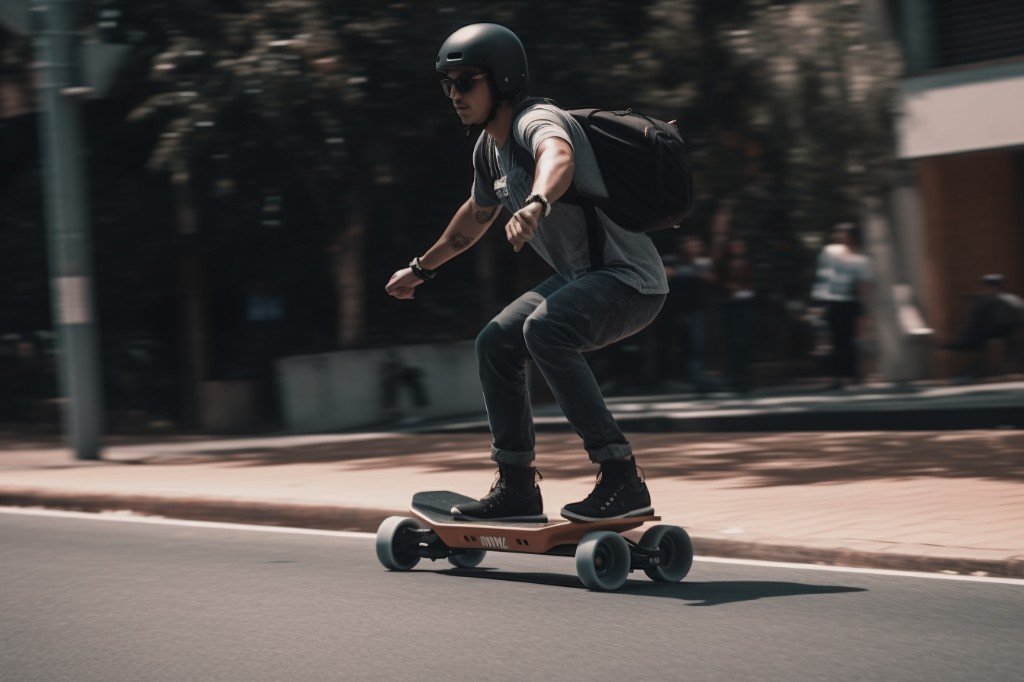
Brief Overview of Electric Skateboards
Electric skateboards are marvels of modern engineering. They combine the classic design of traditional skateboards with advanced technology to create a smooth and safe ride. When I first hopped on an e-skateboard, I was amazed at how effortlessly it moved. Unlike regular skateboards that require manual pushing for movement, e-skateboards work by using motors and batteries.
The heart of an electric skateboard lies in its motor. The motor receives power from the battery and turns the wheels, which then propels the skateboard forward. The rider controls the speed and direction of the skateboard through a handheld remote, which communicates with the skateboard’s electronic speed controller (ESC). The ESC adjusts the power sent to the motor based on the rider’s input, allowing for precise control over speed and acceleration.
The batteries in an electric skateboard are rechargeable, usually lithium-ion or lithium-polymer types. They store enough energy for several miles of riding before needing to be recharged. The range of an electric skateboard can vary depending on factors like the rider’s weight, the terrain, and the battery’s capacity.
Key Components of an Electric Skateboards
Now that we have a basic understanding of how electric skateboards work, let’s delve into the parts of an e-skateboard that make all this possible.
First up is the deck. The deck is the flat part of the skateboard where the rider stands. Decks for electric skateboards are usually longer than those for regular skateboards to accommodate the extra components and to provide more stability at high speeds.
Next, we have the trucks. These are the metal pieces attached to the underside of the deck that hold the wheels. The trucks on an e-skateboard also house the motor, which is usually attached directly to one or two of the wheels.
The wheels are another crucial part of an electric skateboard. Some e-skateboards have larger, softer wheels than regular skateboards, allowing for a smoother ride over bumps and rough surfaces.
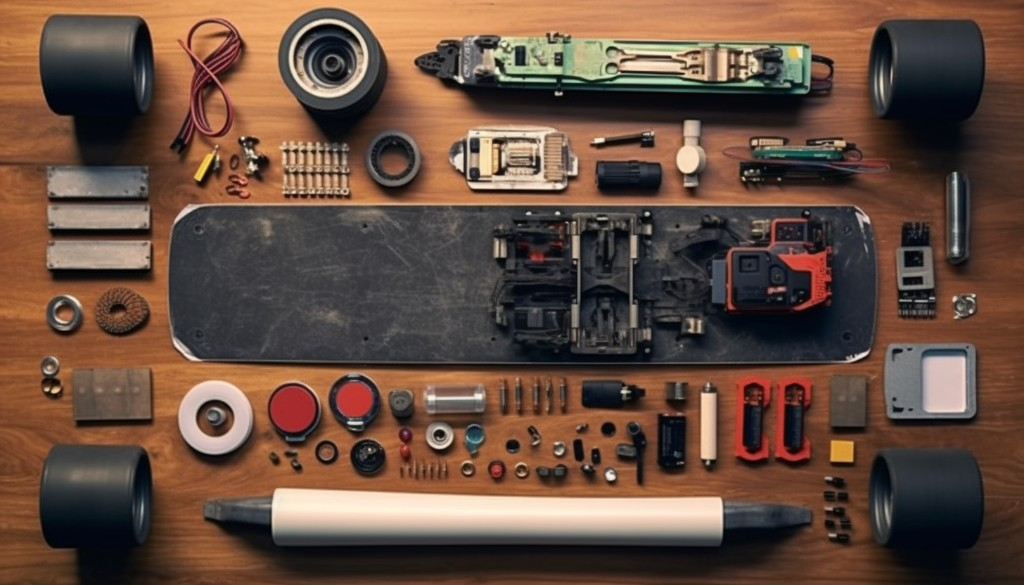
As mentioned earlier, the motor is what makes an e-skateboard move. The motor’s power is measured in watts, with higher wattage motors providing more speed and climbing ability.
The battery powers the motor and is usually housed within the deck. The capacity of the battery, measured in watt-hours, determines how far the e-skateboard can travel on a single charge. Regular maintenance of your electric skateboard battery can significantly increase its lifespan.
Finally, the remote control is what the rider uses to control the skateboard. The remote communicates with the ESC to adjust speed and braking.
Each of these parts of an e-skateboard plays a critical role in delivering a fun and thrilling ride. Understanding these components not only enhances your appreciation for these innovative machines but also helps you make informed decisions when buying or maintaining an electric skateboard.
By delving into these components, you can appreciate the complexity and engineering marvel that lies within an electric skateboard. It’s not just a board with wheels; it’s a carefully designed system that brings together various components to create a unique riding experience.
Detailed Components of an Electric Skateboard
If you’re like me, you might have wondered what exactly makes an electric skateboard tick. How does it cruise along the pavement so effortlessly, and what gives it that zippy acceleration? Well, let’s delve deeper into the nitty-gritty and dissect the various components that make up an e-skateboard.
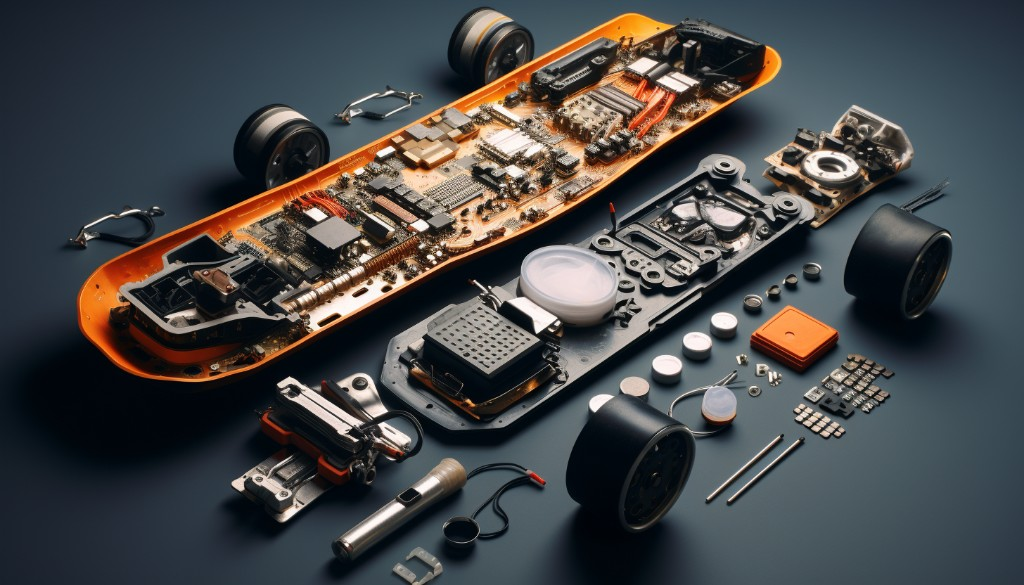
The Deck and Grip Tape
Every journey on an electric skateboard begins with the deck – that’s the platform you stand on when riding. It’s more than just a fancy piece of wood, though. The deck is designed to be durable and flexible, absorbing vibrations from the ground while providing a stable surface for riders.
But here’s something you might not know: the deck also influences the skateboard’s overall performance. A longer deck, for instance, can offer greater stability at high speeds, while a shorter one is more maneuverable. So, when choosing an electric skateboard, consider the deck size and shape that best suits your riding style.
And then there’s the grip tape. It may seem like a minor detail, but it plays a vital role in keeping your feet firmly planted on the board. This gritty surface, much like sandpaper, provides traction and control during rides. It’s like your skateboard’s version of a car’s tires. So don’t underestimate the grip tape; it can make a world of difference in your riding experience.
Trucks
Next up are the trucks. These metal T-shaped pieces affixed to the underside of your skateboard might seem insignificant, but they’re actually key to your board’s steering mechanism. The trucks connect the wheels to the deck and allow you to turn by tilting your weight from one side to the other. This makes them essential when performing maneuvers like carving or drifting on your electric skateboard.
There are two trucks on a skateboard, and each consists of several parts including the axle, hanger, kingpin, and bushings. Together, they work to provide a smooth, responsive ride. So next time you make a sharp turn or carve down a hill, remember it’s all thanks to those humble trucks!
Wheels
The wheels of an e-skateboard are the interface between you and the road. They come in various sizes and types, each designed to handle specific terrains and riding conditions.
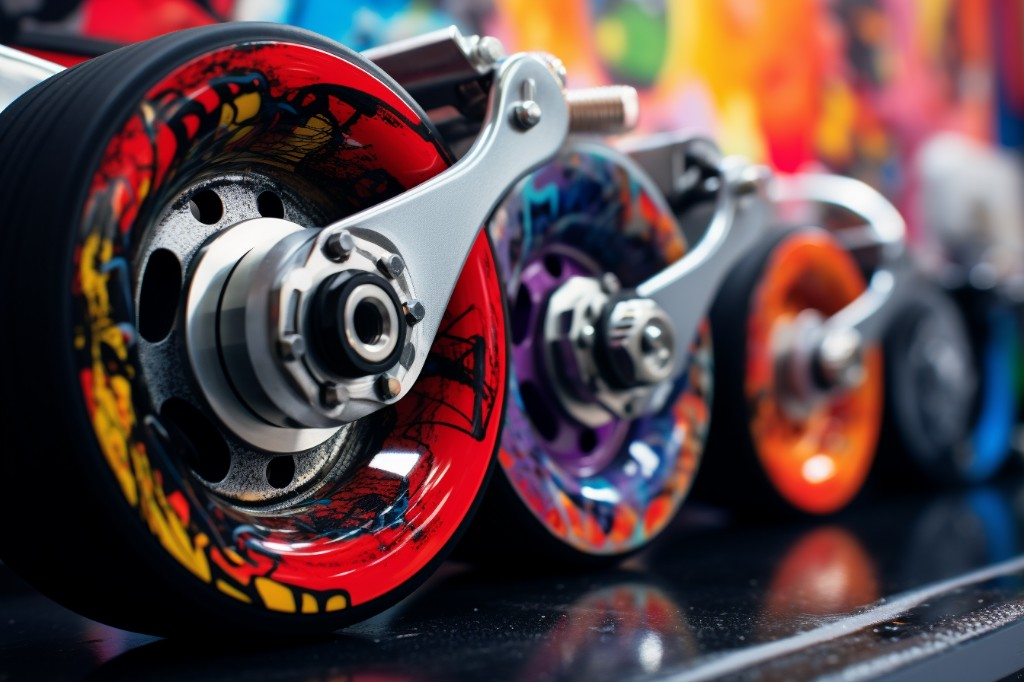
Role of Different Wheel Types
Street wheels, for instance, are typically smaller and harder. They’re ideal for smooth surfaces like city streets and skate parks, offering a faster ride with more slide-ability. If you’re a fan of performing tricks or daring stunts, these might be your go-to choice.
On the other hand, all-terrain wheels are larger and softer. They’re designed to handle uneven surfaces like gravel, dirt paths, and even grass. With their wide footprint and chunky treads, all-terrain wheels can offer increased stability and grip on tricky terrain.
But here’s the cool part: the type of wheels you choose can dramatically affect your skateboard’s performance. Larger wheels can provide a higher top speed but slower acceleration, while smaller ones offer quicker acceleration but a lower top speed. Similarly, harder wheels slide more easily – great for performing skateboarding tricks – while softer ones provide more grip and smoother rides.
What’s important to remember is that maintenance of these key components is paramount in the performance of your e-ride. Knowing how to maintain and replace the wheels of your electric skateboard are essential skills you’ll need to master.
So you see, every component of an electric skateboard – from the deck and grip tape to the trucks and wheels – plays its part in shaping your riding experience. By understanding these parts and their functions, you can better appreciate the engineering marvel that is your e-skateboard. And who knows? Maybe it’ll inspire you to customize your own board to perfectly suit your style!
Motors and Their Varieties
Electric skateboards, like other electric vehicles, use motors to power their movement. The type of electric motor installed in an electric skateboard can have a significant impact on its performance, speed, and overall riding experience. Some of the most common types of motors used in electric skateboards are hub motors, belt motors, and direct drive motors.

Hub Motor
Hub motors are one of the most common types of electric motors used in electric skateboards. A hub motor is an electric motor that is built directly into the wheels of the skateboard. This design allows for a smooth, quiet ride, as there are fewer moving parts to generate noise. Plus, with the motor inside the wheel, it’s less likely to be damaged by debris or impact. Hub motors also provide direct torque to the wheels, which can result in better acceleration and hill climbing capabilities.
Belt Motor
The belt motor system works a bit differently. In this setup, the electric motor is mounted onto the board’s chassis, and it drives the wheels through a system of belts and pulleys. This design allows for greater torque and faster acceleration than hub motors. It also enables easier maintenance as you can replace individual components like the belt or pulleys if they wear out or break. However, the downside is that the belt motor system can be a bit noisier than a hub motor due to the additional moving parts.
Direct Drive Motors
Direct drive motors, on the other hand, offer a balance between the two aforementioned types. These drive motors are not built into the wheels like hub motors, nor do they use belts and pulleys like belt motors. Instead, they are mounted directly onto the axle and drive the wheels directly. This results in a quieter ride than belt motors and better torque delivery than hub motors.
The Battery’s Function
No matter the type of motor used, all electric skateboards need a power source, and that’s where the battery comes in. The battery is the heart of an e-skateboard, supplying the necessary power to the electric motor. It’s crucial to have a reliable and long-lasting battery to ensure you can ride your electric skateboard for extended periods without needing to recharge frequently.
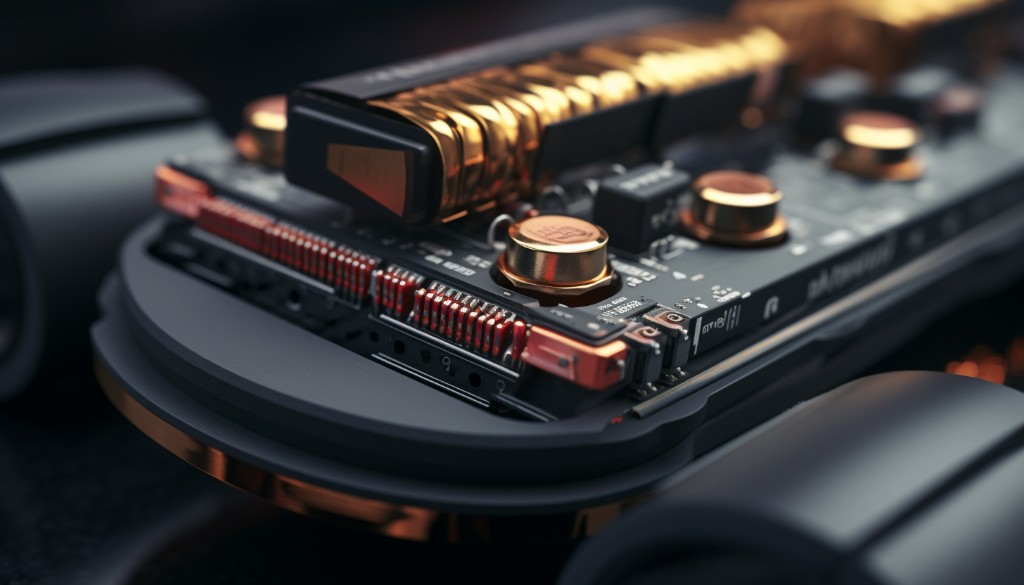
The Role of Electronic Speed Controller (ESC)
Once the battery provides power, it’s the job of the electronic speed controller (ESC) to manage this power supply. The ESC plays a critical role in regulating the speed of an electric skateboard. It interprets signals from the remote control, adjusts the voltage delivered to the electric motor, and thus controls the speed of the skateboard. A good ESC can provide smooth acceleration and deceleration, making your ride more comfortable and safe.
Use of Remote Control in Operating Skateboards
To operate an e-skateboard, riders typically use a remote control. This handheld device sends signals to the ESC, which in turn adjusts the power supply to the motor. With a remote control, riders can adjust their speed, switch between different riding modes, and even activate brakes.
Importance of Brakes
Braking is an essential function that every skateboard must have for safety reasons. The brakes on an electric skateboard are typically controlled through the remote controller. When a rider presses the brake button on the remote control, the ESC reduces or cuts off power to the motor, slowing down or stopping the board. Some advanced systems even use regenerative braking, where the energy from braking is used to recharge the battery, thus increasing overall efficiency.
How the Components Function Together
Picture this: You’re standing on your electric skateboard, remote control in hand, ready to cruise down the bustling city streets. You push the throttle on your remote, and suddenly, your board surges forward, powered by unseen forces. This smooth operation of an electric skateboard might seem like magic, but it’s all about the synchronized functioning of various components. Let’s delve deeper into how the different parts of an electric skateboard work in unison to give you a seamless ride.
Interplay Between the Battery, Motor, and ESC
Imagine the battery as the heart of the electric skateboard. It pumps energy, much like blood, into the system, supplying power to the motor. When you press the throttle on your remote control, the electronic speed controller (ESC) acts as the brain, interpreting this signal and deciding how much power to draw from the battery.
It then feeds this power to the motor, which converts it into mechanical energy to spin the wheels. The more throttle you give, the more power the speed controller pulls from the battery, leading to a faster spin of the wheels and consequently, a faster ride.
But here’s where things get even more interesting: when you’re going downhill and not using the throttle, the wheels might still be spinning. In such cases, the motor acts as a generator and sends power back to the battery through the electronic speed controller, recharging it slightly. This process is known as regenerative braking and is a fantastic example of how these components interact to make your e-skateboard work efficiently.
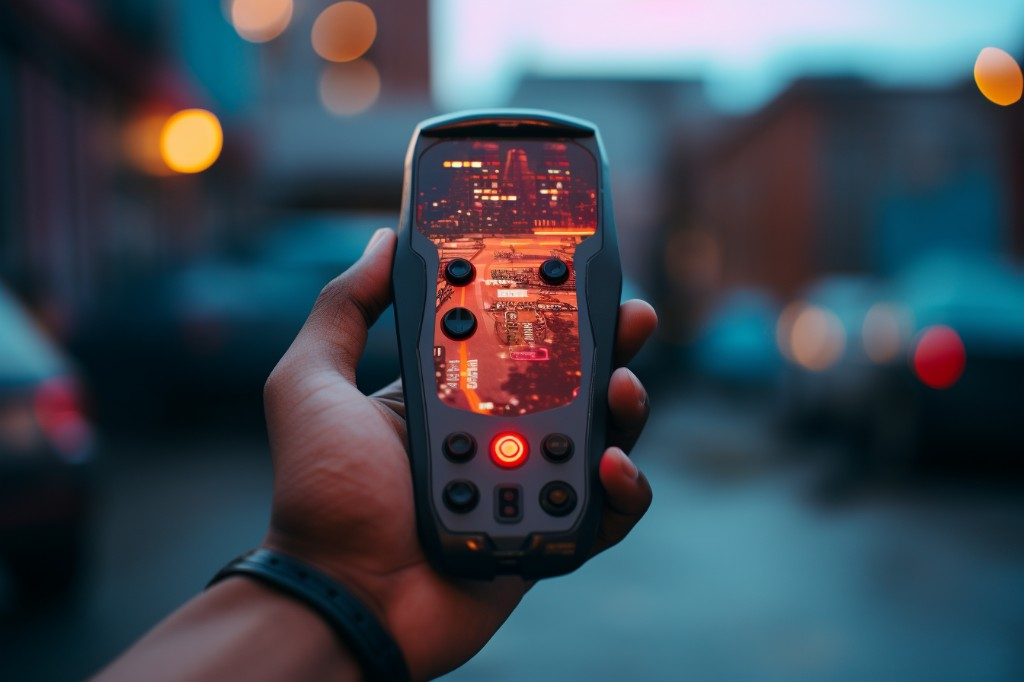
The Role of the Remote Control in Operation
The remote control is like a bridge between you and your board. It’s how you communicate your intentions to the skateboard. Want to go faster? Just push the throttle. Need to slow down or stop? Pull back on the brake.
Inside this remote control are electronic components that transmit your inputs as radio signals to the receiver in the skateboard. This receiver is connected to the electronic speed controller, which interprets these signals and adjusts the power from the battery to the motor accordingly.
As a rider, it’s crucial to understand that the remote control isn’t just a tool to operate your skateboard; it’s your means of expressing how you want your e-skateboard to work. Mastering it can make the difference between a smooth, exhilarating ride and a choppy, unpredictable one.
In essence, all these components — the battery, motor, ESC, and remote control — work together like an orchestra, each playing its part to create a harmonious ride. The battery provides the power, the motor uses this power to drive the wheels, the ESC regulates power distribution based on your inputs from the remote control, and the remote control lets you control how you want your skateboard to work.
It’s fascinating, isn’t it? How all these parts come together to transform a simple push of a button into a thrilling ride down the streets. It’s this intricate dance of technology that makes every ride on an electric skateboard an experience to remember.
Advantages of Electric Skateboards
Taking to the streets on an electric skateboard isn’t just about the thrill of the ride. It’s about embracing a new mode of transport that brings numerous benefits, especially in the realms of commuting and recreation.
Convenience in Traveling
Imagine cruising through city streets without the worry of traffic jams or searching for a parking spot. Riding an electric skateboard can make this dream a reality. These compact, portable devices allow you to effortlessly weave through congestion, making them a highly efficient means of getting from A to B.
In addition to navigating through traffic, an e-skateboard is lightweight and easily carried, making it ideal for those ‘last mile’ journeys – from the bus stop to the office, or from the train station to home. There’s no need for locking it up like a bike, simply pick it up and carry it with you. The convenience factor of riding an e-skateboard is undeniable.

Capability to Ride Uphill
One of the major advantages of e-skateboarding is its ability to conquer hills with ease. Traditional skateboards require significant effort and momentum to ascend slopes, but an electric skateboard operates differently.
Equipped with powerful motors, electric skateboards are designed to effortlessly climb inclines, making hill rides a breeze. The uphill capability of an e-skateboard is not only fun but also practical, especially for those living in hilly cities or areas with steep roads.
Ability for Long Distance Travel
A common misconception about e-skateboards is that they’re only suitable for short trips. In reality, these machines have impressive battery lives and can travel substantial distances on a single charge.
Depending on the model and battery capacity, some electric skateboards can cover distances of over 20 miles before needing a recharge. This makes them a viable option for long commutes, extended joyrides, or even exploring new cities.
When you think about the freedom of riding an electric skateboard, the possibilities seem endless. You’re no longer limited by physical stamina or geographical terrain – you can go further and faster than ever before. And let’s not forget the environmental benefits. By choosing an electric skateboard over a car for short trips, you’re reducing your carbon footprint, making a positive contribution to the environment.
So, whether you’re a city dweller seeking a more efficient way to commute, an adventure seeker wanting to explore hilly terrains, or someone simply looking to travel long distances without the need for gas or constant pedaling, an electric skateboard could be the perfect solution. From convenience in traveling to the capability to ride uphill and the ability for long-distance travel, the benefits of e-skateboarding are numerous and worth considering for your next ride.
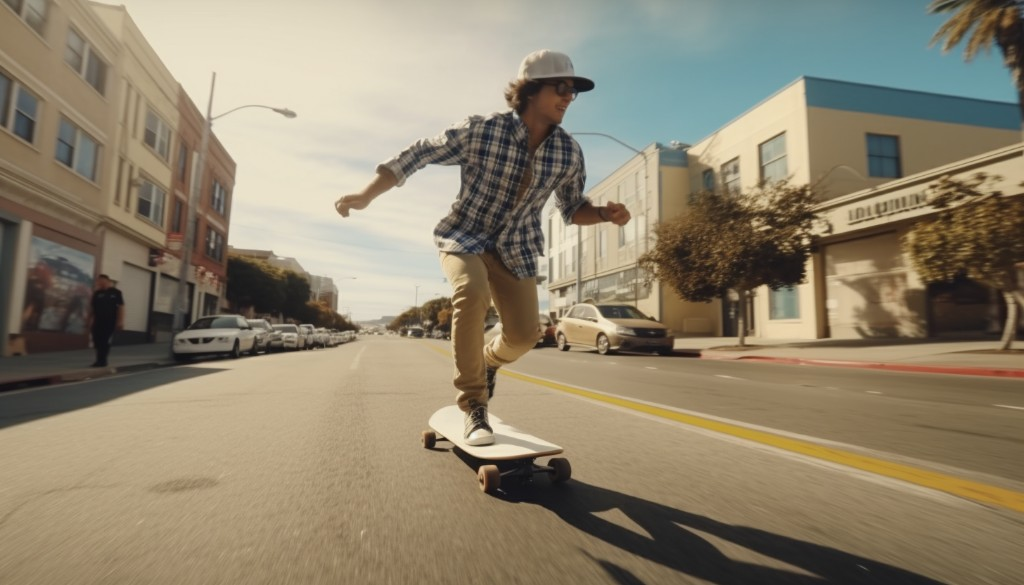
Closing Thoughts
In the exploration of electric skateboards, we’ve delved into the detailed components that make them function so smoothly and efficiently. These advanced technological devices not only provide a fun and convenient mode of transportation, but also offer a fun and thrilling riding experience. However, their benefits extend beyond mere functionality, offering unique advantages such as speed control and effortless mobility.
Safety is a paramount consideration when operating an electric skateboard, emphasizing the importance of understanding their working mechanisms. Electric skateboards truly represent a fascinating blend of technology and recreation, holding a significant place in our evolving transport landscape.
Frequently Asked Questions
How does an electric skateboard work?
An e-skateboard operates through a combination of components such as the motor, battery, remote control, and electronic speed controller. These components work together to control speed and direction, powered by the energy stored in the battery.
What are the key components of an electric skateboard?
The main components of an electric skateboard include the deck, trucks, wheels, motor, battery, electronic speed controller, and remote control. Each of these parts plays a crucial role in the functioning of the skateboard.
Can you use an electric skateboard like a regular skateboard?
Yes, you can use an e-skateboard like a regular one. However, it’s important to note that due to the additional components like motors and batteries, they may be heavier and harder to maneuver in certain situations.
What are the advantages of using an electric skateboard?
E-skateboards offer several advantages such as speed control, uphill riding capability, and reduced manual effort. They also provide a fun and eco-friendly mode of transportation.
What safety measures should be taken when riding an electric skateboard?
Safety measures for riding an electric skateboard include wearing protective gear such as helmets and knee pads, maintaining a safe speed, being aware of your surroundings, and ensuring your board is in good working condition before each ride.
